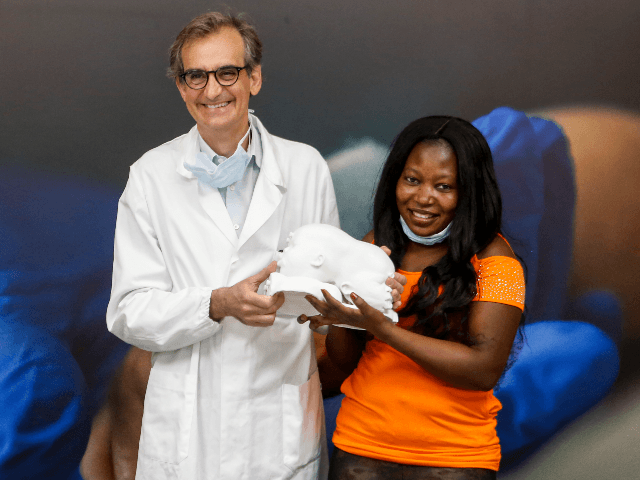Two-year-old conjoined twins Ervina and Prefina were successfully separated after an 18-hour procedure on Sunday.
Ervina and Prefina of Bangui, Central African Republic, were delivered with the backs of their skulls fused together; a condition called “total posterior craniopagus.” While both were considered healthy, one sister’s heart was under significantly more stress, maintaining the “physiological balance of the organs of both, including the brain.”
When Gesu Pediatric Hospital President Mariella Enoc saw the twins and their mother in 2018, she decided to bring them to the Italian hospital in hopes of giving them the best chance for survival. “When you find a life that can be saved, you have to save it,” she said.
But separating a a total posterior craniopagus is especially dangerous, due to the large amount of delicate vessels delivering oxygenated blood to the brain. Only two other similar operations have succeeded in Europe in the last 20 years.
The goal was “to obtain a separation with the girls in perfect condition. So the objective we gave ourselves was very ambitious, and we did everything to reach it,” Dr. Carlo Marras, chief of pediatric neurosurgery at Bambino Gesu, said.
Since 2018, the twins had two major surgeries. On June 5th, 30 physicians and hospital staff — including neurosurgeons, anesthesiologists, neuroradiologists, plastic surgeons, engineers, and physiotherapists — gathered to perform the final, 18-hour procedure. Surgeons had to not only separate the skulls, but reconstruct the membrane covering their respective brains, and recreate the skin lining over their now-exposed skulls.
Dr. Jesse Taylor, head of plastic surgery at the Children’s Hospital of Philadelphia, participated in some of the procedures. “It’s one of those configurations that I think a lot of centers, when they see it, say, ‘You know, we’re not sure that this can be done safely,'” Taylor said.
“The venous drainage tends to be the main limiting step for separability” in cases like this, Taylor said, and added, “When it comes to the back of the head, you don’t have a lot of wiggle room for borrowing veins.”
After the grueling surgery, the team’s relief was palpable: “It was an experience that wasn’t just professional but above all human,” Marras said. “To think that you can arrive at something that we had only imagined, with all the possibilities of failure. It was a magical moment. Marvelous.”
Ervina and Prefina’s mother, Ermine Nzotto, is understandably overjoyed by the success. “It’s a joy, that I can see my girls run and play like other children. May they tomorrow study and learn to become doctors to save the other children of this world,” she said.

COMMENTS
Please let us know if you're having issues with commenting.